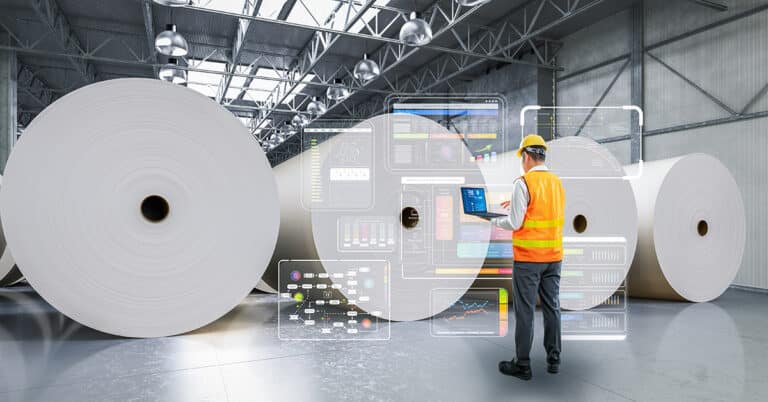Unplanned downtime in manufacturing is one of the primary scenarios that most facilities strive to avoid. The reason for this is simple: Production downtime, especially when unexpected, equates to lost money for the business. If a machine is not operating, it is not generating revenue — and could be creating additional costs in repairs, replacement parts, and labor or resources.
For all of these reasons, unplanned downtime in manufacturing is anathema to the objective of a plant operating at maximum efficiency. Uptime is a key metric in overall equipment effectiveness (OEE) and productivity and could provide accurate insight into the success of a facility. In the rest of this article, we will examine causes of downtime in manufacturing, types of machine downtime and tips for avoiding manufacturing downtime.
Causes of downtime in manufacturing
Some of the most common causes of unplanned machine and factory downtime include:
- Inadequate preventive maintenance: Without timely preventive maintenance, components may wear out, equipment might not be cleaned, and important tasks such as oil or filter changes may not occur on schedule — all of which could lead to downtime when these mechanisms fail.
- Insufficient training: If maintenance personnel are not fully trained or if an operator does not know how to run equipment effectively, the machinery is likely to experience failure or operate outside of spec, leading to downtime.
- Undetected equipment malfunction: Even with proper maintenance, equipment malfunctions may still occur, including overheating and increased vibration that may not be detected until it is too late.
- Lack of trained or certified operators on staff or on shift: The technical skills gap in manufacturing means that in some cases, a machine operator may not be available. While not attributable to an equipment malfunction, this is still considered unplanned downtime.
Types of machine downtime
The causes listed above can lead to various types of downtime, including:
- Equipment outages: Once equipment or components fail or operate outside of spec, a machine can no longer function, leading to downtime.
- Unplanned maintenance and repairs: Whether due to an outage or aberrant operation, unplanned maintenance and repairs require equipment to be fully shut down, which can create major problems for a facility.
- No operator available: As mentioned above, when a qualified operator is unavailable, machinery cannot run.
Tips to keep your plant running during unplanned downtime
Even with a deeper understanding of the causes and types of unplanned downtime, it is still likely to occur at some point. When these scenarios happen, the best thing that you can do is be prepared with a plan to address it. Here are some tips to maintain some level of operation when experiencing unexpected downtime:
- Have the right personnel on hand: When unplanned downtime occurs, a primary goal should be to get the equipment running as quickly as possible. This requires maintenance staff with training and expertise on that particular piece of machinery, as well as the presenting problem. Without the right technicians on hand, you may need to wait for someone to arrive or enlist emergency, external expertise.
- Review and optimize inventory and MRO management: One of the biggest factors in delayed repairs — and extended downtime — is difficulty locating the right replacement components. This might be because inventory counts are inaccurate, the part is not where it belongs, or spares were not reordered with sufficient lead time. Inability to locate the right tools could lead to extra time tracking down the part or additional costs for rush orders.
- Shore up your supply chain: Supply chain difficulties might also create inventory disruptions, and in worst-case scenarios, could align with unplanned downtime. In order to combat this potential problem, it is important to have a diversified supply chain and access to multiple suppliers in order to keep the right parts on hand when you need them.
- Instill maintenance training as part of organizational culture: A culture of maintenance means that all employees are up-to-date with the skills needed to spring into action as soon as repairs or contingency plans are required.
- Get ahead of problems as early as possible: Of course, the best remedy for downtime is to prevent it from happening — or to schedule it for convenient times. Predictive maintenance and preventive maintenance play a major factor in identifying problems early and reducing unexpected downtime.
At ATS, we offer extensive expertise in industrial maintenance and MRO asset management, with a focus on reliability and keeping your facility operating at peak performance. Our plant maintenance services include skilled technicians providing on-site preventive and predictive maintenance for improved asset health. For more information, contact ATS today.






